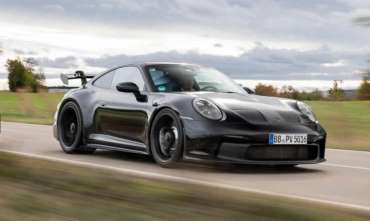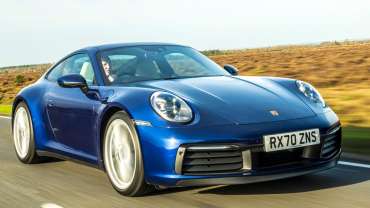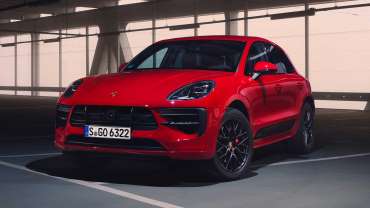Displaying items by tag: Porsche
2022 Porsche 911 GT3 First Ride Review: Big Talent
Up close and personal with one of the year’s most anticipated driver’s cars.
There's the merest hint of a twitch, caught instantly with the tiniest flick of the wrists. Andy Preuninger keeps his foot down. The corner opens onto a short straight running between trees with hints of the red and gold and brown of autumn among the green. The tach needle swings past 8,000 rpm, a steely manic snarl behind us as Preuninger reaches for the shifter on the center console and plucks the next gear. "A Porsche 911 GT3 is like a human being," he says, watching like a hawk for damp patches on the tarmac. "It likes warmth. It likes operating in the same temperatures we do, 15 to 25 degrees centigrade. When the dampers and the tires are cold it communicates that it's not happy."
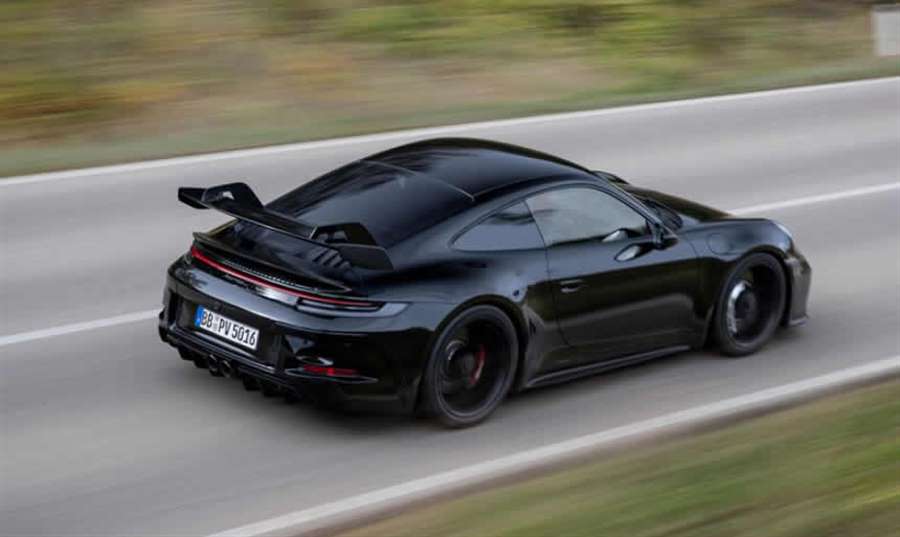
Andreas Preuninger's anthropomorphism is not misplaced: As head of the department that engineers and develops Porsche's high-performance GT models, the 2022 Porsche 911 GT3 is, like every GT3 since the 996.2 model, very much his baby. And from where I'm sitting, in the passenger seat of a lightly camouflaged prototype that Preuninger says is basically 99 percent the production car, it feels a preternaturally talented one.
There's been a lot of anxious speculation about this new 911 GT3. Would the bigger, wider 992 platform degrade the stunning poise and precision, the breathtakingly athletic agility that were the hallmarks of the 991.2 GT3? Would the engine have the same crackle and snarl and instantaneous throttle response? Could it be as pure and as exhilarating a sports car? Preuninger gets it: "The challenge is when you have a car that is as good as the 991.2 GT3, how do you make it better?"
First, keep what works. The 992-series GT3 retains the charismatic naturally aspirated 4.0-liter engine from the previous car. Preuninger won't go into precise details, but there have been tweaks to both the intake and exhaust, and the engine management system has been remapped. Power is up, but not by as much as you might expect: It's basically an iteration of the 2019 911 Speedster engine, which pumped out 502 hp and 346 lb-ft of torque. And yes, it revs to 9,000 rpm.
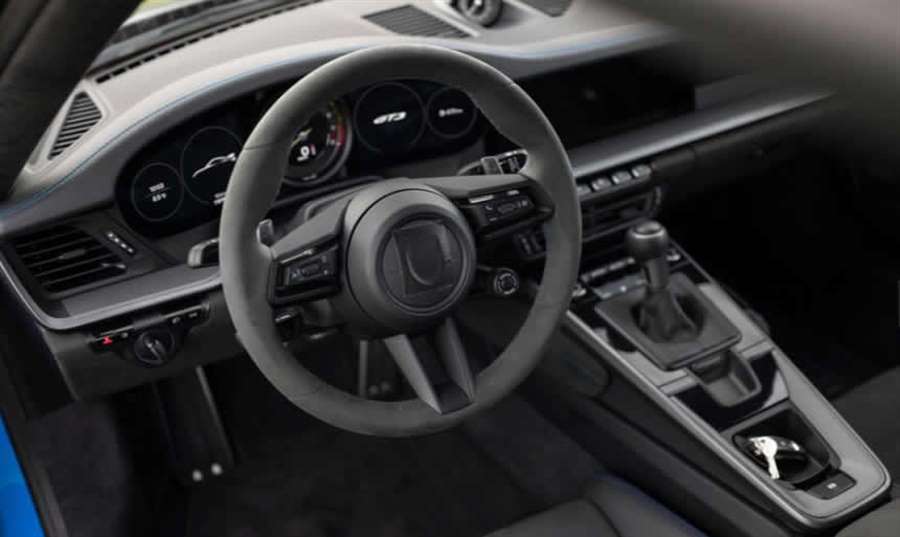
As before, the 2022 911 GT3 will be available with the choice of either a conventional six-speed manual or the PDK seven-speed twin-clutch automatic transmission fitted to our prototype. Both transmissions are carried over from the 991-series GT3, though the PDK gets slightly bigger bearings and a better oiling system, plus a different control module to enable it to work with the 992's new electronic architecture. The manual transmission's ratios are unchanged, but the final drive ratio has been lowered to account for the 992's 21-inch rear wheels.
Keep what works, then think about what can be improved. The 992 platform means the new GT3 has a wider track front and rear. The rear axle is basically upgraded 992-spec hardware, with the rear-wheel steering system as standard. Up front, however, is an all-new multi-link suspension, the first ever on a 911 road car. Derived from the 911 RSR racecar front axle, it's unique to the new GT3, though it's logical to expect the hardware will also appear under the forthcoming 992-series 911 GT2. It's the biggest single engineering change over the old GT3, says Preuninger, and it drove a lot of the chassis development work.
What's noticeable, as we hammer along some of the surprisingly rough and ready roads near Porsche's Weissach engineering center, is not just how crisp, how responsive, how alert this new GT3 feels, even from the passenger seat, but also how well it rides on its Michelin Pilot Sport Cup 2 R tires. The 911 GT3 is not soft—you feel exactly what's happening underneath—but it's not harsh and jittery, even at modest velocities. Preuninger nods when I comment. "Some people confuse stiffness with sportiness," he says. "A wheel needs freedom to travel. Some performance cars are so stiff they feel dead at low speed." This GT3 feels very much alive.
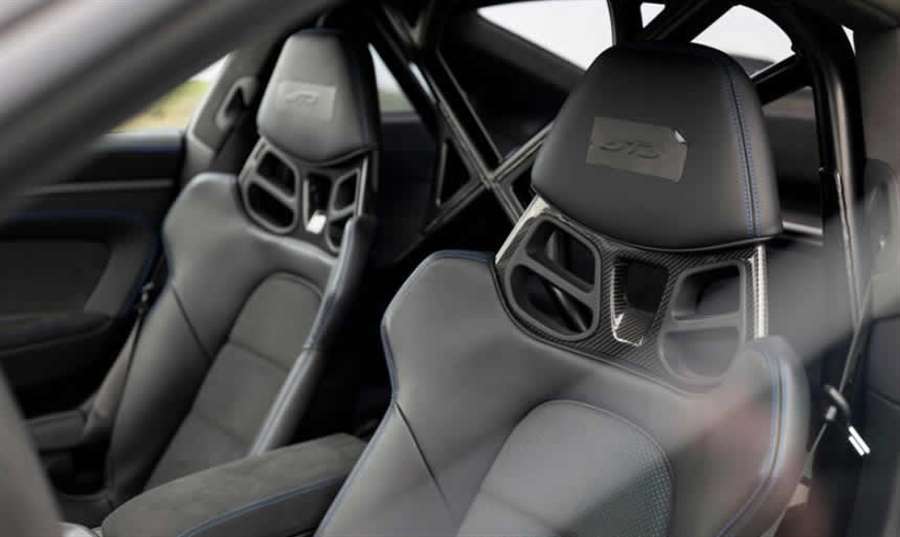
A look around the undisguised interior of the new GT3 reveals it to be, apart from the obvious GT-spec hardware such sports seats and a half roll-cage, basically 992, with one notable—and welcome—difference. The small, soulless toggle switch used to select drive or reverse in PDK-equipped 992s has been replaced by a shifter that looks almost identical to the manual one. "You have to check that it has three pedals, to make sure," grins Preuninger, who prefers using a shifter on the center console to paddles on the steering wheel, even in PDK-equipped GT3s and GT2s.
Front and center in the new instrument panel is an analogue tach that reads to 10,000 rpm, flanked by screens either side that can show all the information you get in a regular 911. There's a special GT configuration that pares back that info to the minimum a race driver wants: Tire pressures and water temp on the left hand side and oil temperature, oil pressure and fuel level on right hand side. And curving around lower rim of tach are shift lights that appear in Sport manual mode comprising thin yellow graduations that build in height then flash blue at the upshift point.
The scanty exterior disguise doesn't hide much, but it doesn't reveal all the new GT3's secrets, either. A quick look around reveals the front fenders, doors, roof and rear quarter panels are shared with regular 911s. A new front bumper features a large central air intake and slim air-curtain vents on either side that direct air through the front wheel well. The front hood is carbon fiber, and features vents at the leading edge to bleed hot air from the radiators. In previous 911 GT3s hot air was vented through slots at the top of the bumper, but the 992's more complex frontal structure meant there was no room for that solution on the new car.
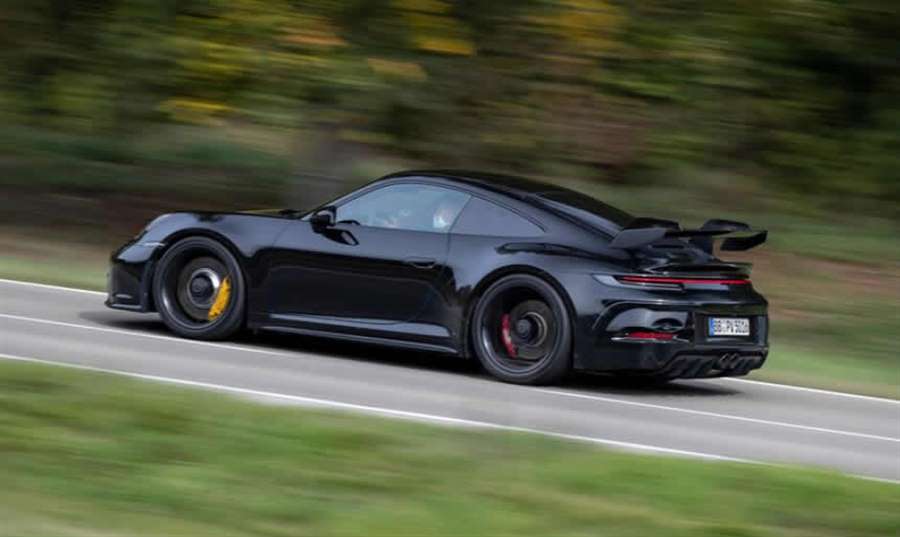
The GT3's rear view is dominated by a giant wing suspended beneath two stanchions that rise up from either side of the engine cover. The wing set the internet buzzing the moment the first prototypes were spotted, and a lot of the buzz from the hot take commentariat was less than favorable. The wing is not a fashion statement. It's pure racing technology. Because the underside of the wing is the most critical surface in terms of generating downforce, the top mount system makes it more aerodynamically efficient and effective. And while I can't give you any detail, what I can say you haven't seen the wing stanchions in their production form yet. Undisguised, they are works of art.
Under the wing is a new engine cover with a ducktail. When the rear wing is in the most aggressive of its three settings, its underside profile and the profile of the ducktail are a mirror image. The ducktail helps manage the laminar flow over the roof, to the point that the ram air scoops that featured on the 991 versions of the GT3 are not needed. Air goes into the engine intake via the vents at the base of the rear window. Preuninger says the old-style scoops would have interfered with the efficiency of the rear wing.
Before we head back to Weissach the man who's been instrumental in creating some of the greatest 911s ever built eloquently sums up what he believes to be the essence of a Porsche 911 GT3. "It has to be a joy to drive," he says. "It must be communicative, transparent, honest, at any speed. It has to scream 'drive me'."
Even from the passenger seat I hear that scream. I can't wait to drive the 2022 Porsche 911 GT3.
Source: motortrend.com
New Porsche 911 Carrera S manual 2020 review
We find out if the new Porsche 911 Carrera S with a seven-speed manual is the driving enthusiast's choice
Verdict
Objectively, the 911 Carrera S makes little or no sense whatsoever with a manual gearbox, even though the new seven-speed transmission is listed as a no cost option. The car is slower, burns slightly more fuel and is fractionally more polluting than its dual-clutch automatic equivalent. Yet subjectively, it is more engaging, more fun, and more 911 with three pedals, despite the shift itself still not being perfect. In the end it’s the buyer that makes the choice, but for us the manual is now the more appealing sports car.
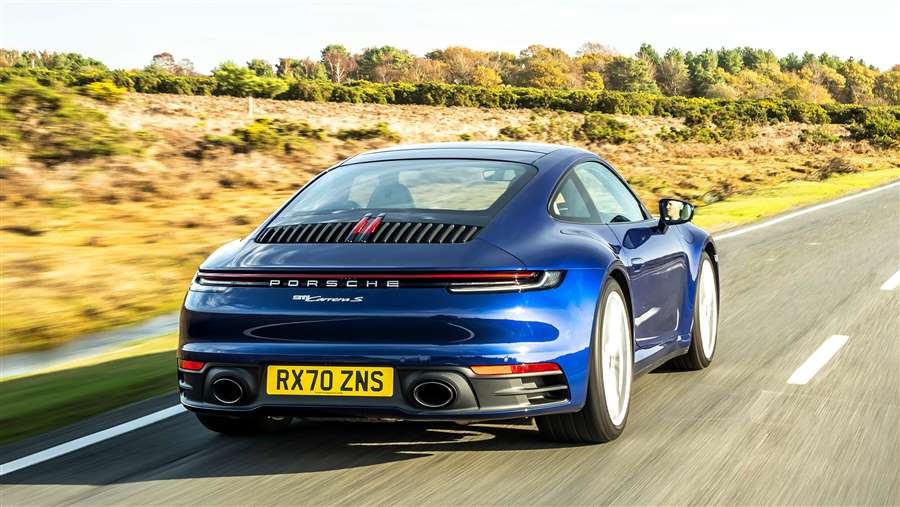
A few years back Porsche announced that it was going to drop the manual transmission not just from the regular 911 line-up but, shock-horror, from the far more focused GT3 versions as well. And at a stroke the world of the die-hard 911 enthusiast was thrown into a flat spin. They couldn’t believe their beloved 911 was no longer going to be available with three pedals in the foot-well and a gearstick between the seats.
Porsche, however, gave several extremely plausible reasons why it had reached this supposedly heretical decision. Without going into too much detail it pointed out that the 911 was faster, more efficient, more economical and, for an increasing number of approving customers, more engaging with a “PDK” dual-clutch gearbox. And for a while, that was that. The fast, manual 911 was no more.
But the enthusiasts continued to holler and eventually Porsche – to its credit – listened to them, even though they were in the minority. First came the 911R with a manual gearbox, then the GT3, and now we have the latest 992 Carrera S 911 available with a seven-speed manual as a no-cost option, tested here in rear-drive form.
In this case you lose 0.7 seconds going from 0-62mph versus the rear-drive Carrera S with a PDK gearbox, and 0.8 seconds during the sprint from 0-100mph (the manual takes 4.2 seconds to hit 0-62mph and 8.6 seconds to cover 0-100mph).
This is partly because you lose one ratio compared with the PDK, which means the ratios themselves are wider. But it’s also a consequence of simply not being able to shift as fast in the manual, up or down, and that’s where the science tends to throw a bit of a spanner in the works – because, subjectively, although the PDK is terribly impressive at what it does, it ain’t no substitute for stirring the lever and using the clutch manually.
Those with a good memory will recall that the previous generation 911 was also available with a manual gearbox for a short time, but the shift quality in that car wasn’t great, which somewhat defeated the object. This time, however, Porsche claims to have significantly improved the action of the shift with shorter, lighter, more precise throws, with seventh still on a dog-leg to the top right hand side of the gate.
And that’s very much how it feels when driving the new manual 911, albeit with one strange caveat which we’ll come to in a moment. What’s good about this 911 manual, no, what’s great about it is that it manages somehow to feel more like a traditional 911 on the move. For whatever reason, the car simply feels more compact and more agile when you’ve to dip the clutch and use your left hand to change gear.
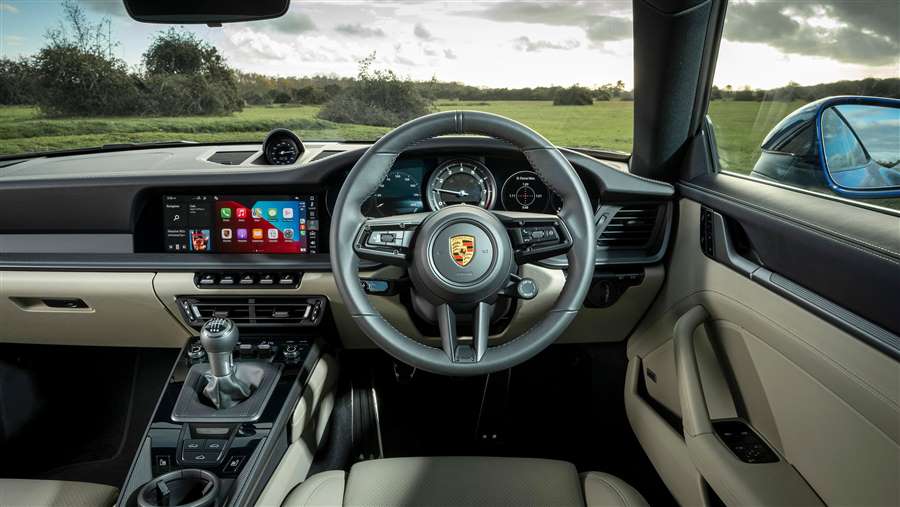
The manual is fractionally lighter than the PDK, but only by 35kg, so it’s highly doubtful this in itself would make much difference to what you feel when behind the wheel.
Instead it’s all about the subjective impression the manual 911 has upon you, the driver. In the most basic terms you simply feel more connected with this car when it has three pedals. And, yes, the shift quality itself is indeed a fair bit crisper and better than in the old manual, although as in the fruitiest versions of the new 718 Cayman and Boxster, the revs will blip themselves on downshifts if you select either Sport or Sport Plus mode via the rotational button on the steering wheel. Which is nice, yes, but also feels a bit automated within this context.
The manual even sounds better and feels every inch as fast as the PDK Carrera S if you select, say, third gear and accelerate from low revs all the way up to the red line. So in reality, and despite the differences in the claimed acceleration numbers, it doesn’t feel like you are losing out on any pure performance versus the otherwise mechanically identical PDK model.
And the caveat? For its own reasons Porsche has again made it impossible to select seventh gear from anything other than fifth or sixth gear when shifting up, same as in the old 991. There’s a mechanical block in the gate which means you can’t physically get seventh from a gear lower than fifth. Which obviously means you can’t go from fourth to seventh. This may sound entirely irrelevant but it’s actually quite annoying in practice because a four-seven is just what you want when entering a motorway, for instance.
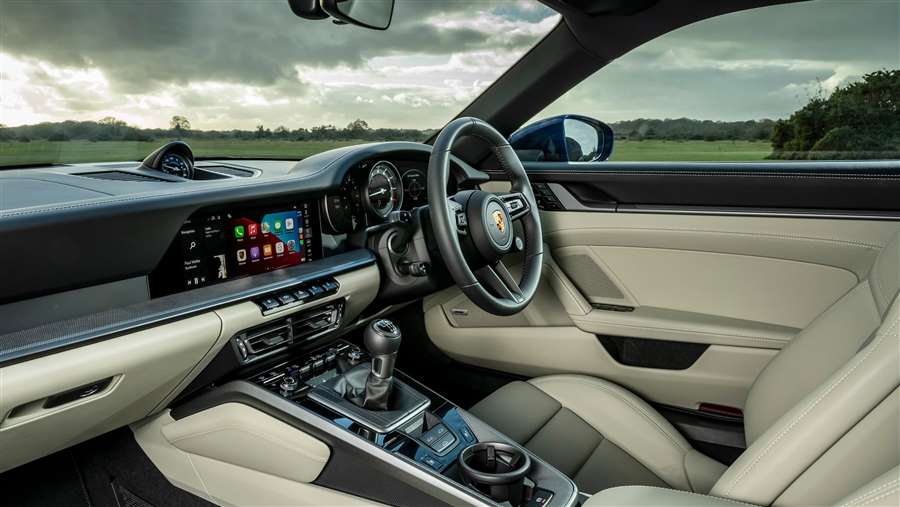
And what’s doubly odd is that you can, should you for some reason choose to, go from seventh to second or even first on the way back down.
Other than this, the manual 911 Carrera S is a very lovely car, one that feels more like a true-blue sports car than its equivalent with a dual-clutch auto. As such it broadens the 911’s appeal even further, catering for around 10 per cent of 911 enthusiasts who might otherwise have looked elsewhere. Including your author, who was once a PDK-only advocate.
Source: autoexpress.co.uk
2022 Porsche Macan Release date, Engine, Exterior, Interior
After plugging into the electric-car market Porsche isn't anywhere close to being done with its EV offensive in the coming years. According information which we have the new 2022 Porsche Macan will be pure-electric, and thanks to a new report, we now have a clearer idea of when we'll see the Macan EV hit the road. The exception will be some small operation with Rimac.
2022 Porsche Macan Release date
Release date for new 2022 Macan should be at the end of next year. Considering situation with Coronavirus all over the world, this promotion can be postponed.
Competitors of new 2022 Macan
When we look what competitors do on this field, we see the similar action from Ford with the Mustang Mach-E. From the other side, big competitor in this segment is Tesla Cybertruck and new GMC Hummer.
2022 Porsche Macan Engine (Battery)
Porsche executives that point to as much as 700 horsepower (525 kilowatts) in a Turbo S variant. Obviously it won’t actually have a turbocharger – like the Taycan it will follow Porsche’s familiar naming structure for trim levels. That means there will be a standard Turbo and other submodels to spruce up the Macan EV lineup.
Porsche had confirmed the Macan will sit on this so-called Premium Platform Electric (PPE). We don't know much else about the upcoming electric Macan, except that it will feature 800-volt charging technology. Also, he will be produced at the same Leipzig factory that makes the current, fossil-fuel-powered versions of the small crossover.
The Macan has become the company’s best-selling vehicle in a relatively short amount of time. Nixing internal-combustion power completely is something Porsche buyers might not be ready for, but with the speed at which the auto industry is currently evolving, things could be very different come 2024.

